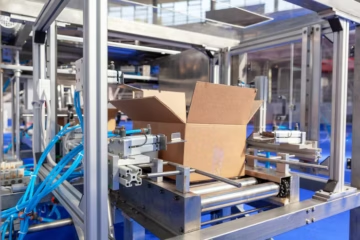Corrugated boxes remain the backbone of global packaging, used across industries from e-commerce to food delivery and industrial shipping. At the heart of this essential packaging solution are sophisticated corrugated box making machines that have evolved tremendously in recent years. Understanding these machines’ technology and capabilities can help businesses make informed purchasing decisions that significantly impact their packaging operations.
Modern corrugated box making machines combine multiple processes into streamlined automated systems. Starting with corrugated board feeding, these machines precisely score, slot, trim, and fold the boards into complete boxes at astonishing speeds. The most advanced models integrate printing, die-cutting, and quality inspection in a single pass, eliminating the need for separate processing stations. This continuous workflow dramatically improves efficiency while reducing labor requirements and floor space needs.
The working principle of these machines centers around precision engineering. Servo-controlled mechanisms ensure accurate scoring and folding to exact specifications, critical for producing boxes that maintain structural integrity during shipping and handling. Advanced glue application systems use temperature-controlled nozzles to apply the perfect amount of adhesive for each box type, preventing both weak bonds and messy excess glue. Some high-end models even feature vision systems that verify each glue line’s placement and consistency in real-time.
Production speed varies significantly across different machine classes. Entry-level models might produce 50-100 boxes per minute, while industrial-grade automatic corrugated box making machines can exceed 300 boxes per minute. The key difference lies in the feeding systems – high-speed models use vacuum-assisted continuous feeders that eliminate the start-stop motion of conventional systems. When considering speed requirements, businesses should factor in not just current needs but anticipated growth, as upgrading later often proves more costly than investing in slightly higher capacity initially.
One of the most valuable features of contemporary machines is their quick-change capability. Traditional models required hours for die and tooling changes between different box styles. Modern solutions incorporate automated adjustment systems that can switch between box designs in minutes, sometimes with just a few button presses. This flexibility is invaluable for manufacturers serving multiple clients or producing various box types. Some machines store hundreds of preset configurations in their memory, allowing operators to recall previous settings instantly.
Energy efficiency has become a major focus in machine design. Leading manufacturers now incorporate regenerative drives that recover braking energy, high-efficiency servo motors, and smart power management systems. These features can reduce energy consumption by 20-40% compared to older models, significantly lowering operating costs over time. Additionally, many machines now feature LED lighting and optimized pneumatic systems that further contribute to energy savings.
When selecting a corrugated box making machine, several key factors demand consideration. Board thickness capacity is crucial – while most machines handle standard B and C flute corrugation, operations working with double-wall or specialty boards need verified compatibility. The maximum and minimum box size capabilities should align with your product range, and consider whether you’ll need specialty features like automatic strapping or partition creation.

The future of corrugated box making points toward even greater automation and intelligence. Emerging technologies include self-learning systems that optimize settings based on material variations, and advanced quality control using 3D scanning to detect even minute dimensional deviations. As e-commerce continues to grow and sustainability concerns drive packaging innovation, corrugated box making machines will remain at the center of packaging production, constantly evolving to meet new market demands.
For businesses looking to enter corrugated box production or upgrade existing capabilities, today’s machines offer unprecedented efficiency, quality, and flexibility. By carefully matching machine specifications to operational needs and growth plans, companies can secure a competitive advantage in the dynamic packaging marketplace while future-proofing their production capabilities for years to come.


